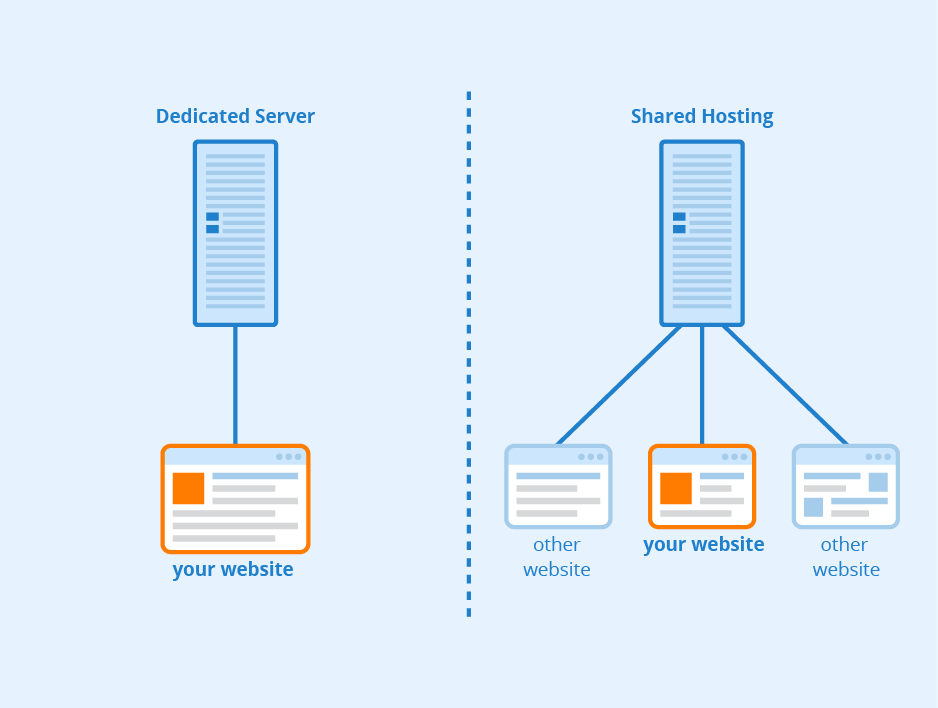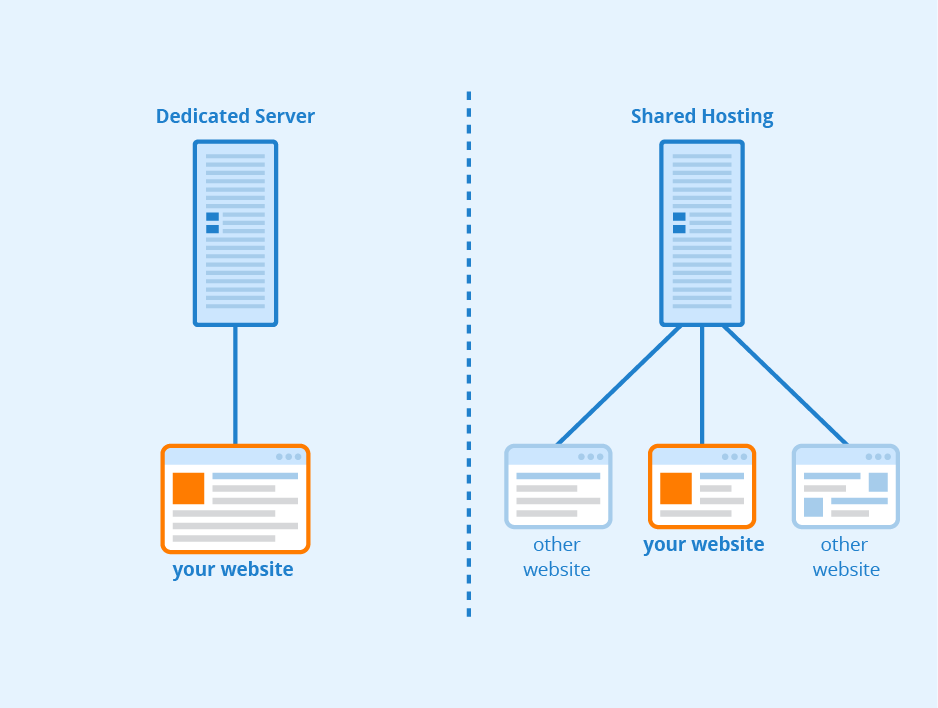Hosting a web server involves several crucial steps. Firstly, choose a reliable hosting provider and select a suitable hosting plan. Next, configure and set up the server with the necessary software and operating system. Secure the server by implementing firewalls and SSL certificates. Once the server is ready, upload your website’s files and configure the domain to point to the server’s IP address. Finally, regularly monitor and maintain the server for optimal performance and security.
Hosting a web server can seem like a daunting task, but with the right knowledge and tools, it can be a seamless process. Did you know that there are over 1.8 billion websites in existence today? With such a vast online presence, having your web server can provide greater control and flexibility for your website or online business.
When it comes to hosting a web server, there are several key aspects to consider. First and foremost, you need to choose a reliable hosting provider that offers both secure and scalable solutions. Additionally, understanding the different types of hosting, such as shared hosting, virtual private servers (VPS), or dedicated servers, is crucial in determining the best option for your needs. It’s also important to configure your server properly by optimizing performance, securing it with firewalls and encryption, and regularly updating software and plugins. By considering these factors, you can ensure a smooth and efficient hosting experience for your website or application.

Understanding Web Server Hosting
When it comes to hosting a website, one of the most important aspects is choosing the right web server hosting. A web server is a computer that stores the website’s files and delivers them to the users when they request to access the website. Hosting a web server involves configuring the server, managing the server resources, and ensuring the server’s security.
There are different types of web server hosting options available, ranging from shared hosting to dedicated hosting. Shared hosting is the most basic and cost-effective option, where multiple websites are hosted on the same server. This can lead to slower website performance if one website experiences high traffic or consumes more resources. On the other hand, dedicated hosting provides a dedicated server for a single website, offering better performance and enhanced security. However, it is more expensive than shared hosting.
Virtual Private Server (VPS) hosting is another popular option that combines the benefits of shared hosting and dedicated hosting. In VPS hosting, multiple websites are hosted on the same server, but each website is allocated a separate virtual machine with dedicated resources. This ensures better performance and security compared to shared hosting. Cloud hosting is also gaining popularity, where websites are hosted on a network of interconnected servers, providing scalability and reliability.
Choosing the Right Web Server Hosting Provider
Choosing the right web server hosting provider is crucial for the success of your website. Here are some factors to consider when selecting a hosting provider:
- Reliability: Ensure that the hosting provider has a reputation for high uptime, as your website should be accessible to users at all times.
- Performance and Speed: Look for a hosting provider that can offer fast loading times for your website, as this contributes to a better user experience.
- Scalability: Consider whether the hosting provider can accommodate the growth of your website and handle increased traffic without affecting performance.
- Security: Check for security features such as SSL certificates, firewalls, and regular backups to protect your website from cyber threats.
- Technical Support: Ensure that the hosting provider offers 24/7 customer support to assist you in case of any issues or emergencies.
It’s also important to compare pricing plans and check for any additional features or limitations before making your decision. Consider reading reviews and seeking recommendations from other website owners to make an informed choice.
Configuring and Managing Your Web Server
Once you have selected a web server hosting provider, the next step is to configure and manage your web server effectively. Here are some key steps to follow:
1. Choose an Operating System
The first step is to choose the operating system (OS) for your web server. The two most common options are Linux and Windows. Linux is preferred by many due to its stability, security, and cost-effectiveness. Windows, on the other hand, is suitable if you require specific Microsoft technologies.
2. Install the Web Server Software
After selecting the OS, you need to install the web server software. The most popular web server software options include Apache HTTP Server, Nginx, and Microsoft Internet Information Services (IIS). These software programs handle the requests from clients and deliver the website’s files to them.
3. Configure Server Settings
Once the web server software is installed, you need to configure the server settings. This includes setting up the domain name, configuring the server’s IP address, enabling necessary modules, and customizing the server’s security settings. It’s recommended to refer to the web server software documentation or seek technical assistance for this step.
4. Manage Server Resources
Managing server resources is crucial to ensure optimal performance for your website. This includes monitoring resource usage such as CPU, memory, and disk space. You can use server monitoring tools or software to track and analyze resource usage and make necessary optimizations to improve performance.
Ensuring Web Server Security
Web server security is of utmost importance to protect your website and its data from cyber threats. Here are some essential security measures to implement:
1. Use SSL Certificates
Secure Sockets Layer (SSL) certificates encrypt the data transmitted between the web server and the user’s browser, ensuring secure communication. SSL certificates are particularly important for websites that handle sensitive data, such as e-commerce websites.
2. Set up Firewalls
Firewalls act as a barrier between your web server and potential threats. They monitor and control incoming and outgoing network traffic, ensuring that only authorized and safe connections are established. Configuring firewalls with appropriate rules and regularly updating them is essential for web server security.
3. Regularly Update Software
Keeping your web server software up to date is critical for security. Software updates often include security patches that address known vulnerabilities. Regularly check for updates and install them promptly to ensure your web server is protected from emerging threats.
Conclusion
Hosting a web server requires careful consideration of various factors, from choosing the right hosting provider to configuring and managing the server effectively. Security should also be a top priority to protect your website and its data. By following the steps outlined in this article, you can successfully host a web server and ensure its optimal performance and security.
For more information on web server hosting and best practices, refer to this comprehensive web server hosting guide.
Key Takeaways: How to Host a Web Server?
- Choose a hosting provider that offers reliable server performance.
- Install a web server software like Apache or Nginx on your server.
- Configure the server settings, including the domain name and port number.
- Create and upload your website files to the server.
- Regularly update and maintain your web server for optimal security and performance.
Hosting a web server involves a few key steps. First, choose a hosting provider that meets your needs and budget. Next, register a domain name that is easily memorable and relevant to your website. Then, set up your server by configuring its settings, such as installing necessary software and creating an administrator account. Once your server is ready, upload your website files and configure the necessary settings, such as database connections and domain routing. Finally, test your website to ensure it is functioning properly and make any necessary adjustments.
It’s important to regularly update and maintain your server to ensure optimal performance and security. This includes regularly backing up your website and server data, as well as keeping your software and plugins up to date. Additionally, consider implementing security measures, such as using a firewall, secure protocols, and strong passwords. By following these steps, you can successfully host a web server and make your website accessible to users around the world.

